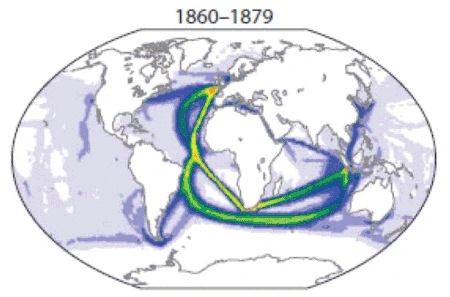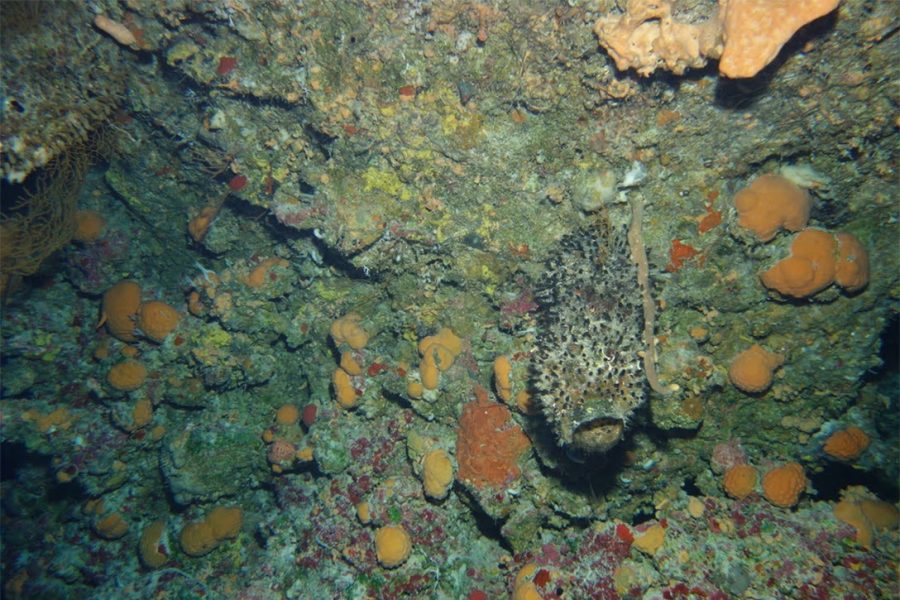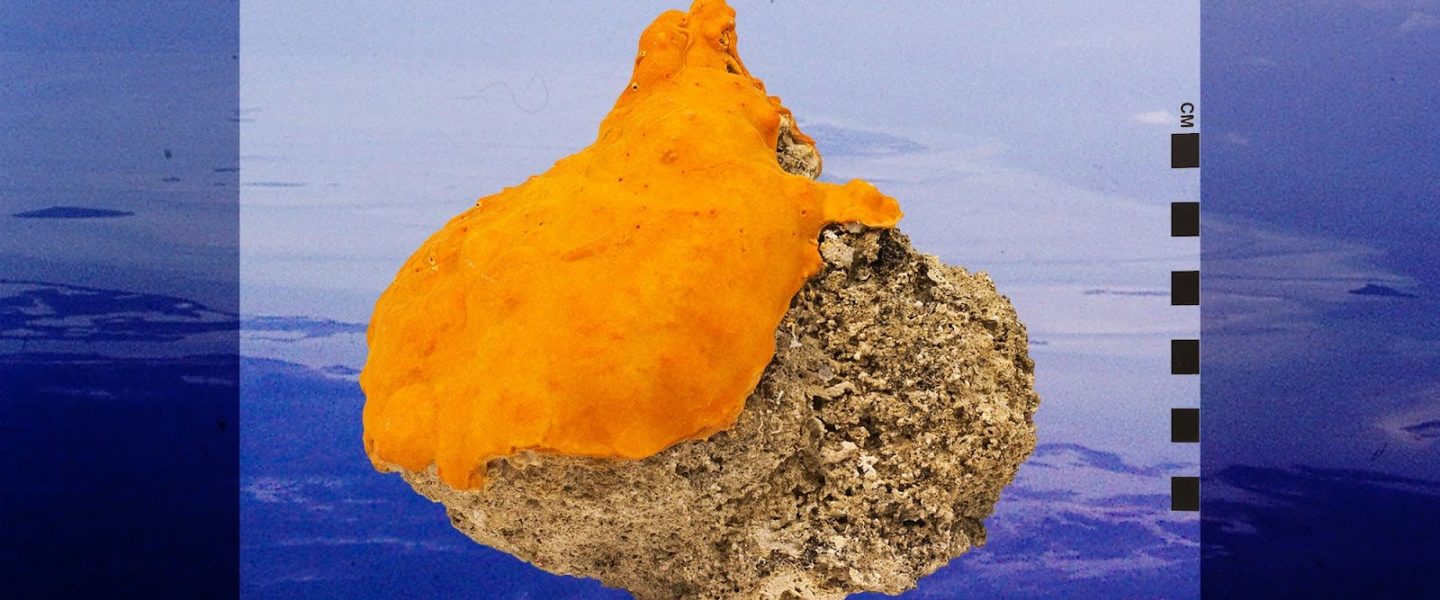The global warming clock started ticking decades earlier than current estimates assume, according to Caribbean sponges.
|
Listen To This Story
|
Sponges from the Caribbean retain a record of ocean temperatures stretching back hundreds of years. These newly revealed paleoclimate records suggest that sea surface temperatures (SSTs) began rising in response to industrial era fossil fuel burning around 1860.
That’s 80 years earlier than SST measurements became common and predates the global warming start date used by the Intergovernmental Panel on Climate Change (IPCC). On the basis of these new sponge records, scientists think that temperatures are currently 1.7 C (~3.1 F) warmer than preindustrial levels.
The study’s researchers argue that the world has already surpassed the goal of the 2015 Paris Agreement to limit atmospheric warming to less than 1.5 C (2.7 F) above preindustrial temperatures and that we could reach 2 C (3.6 F) of warming before 2030.
“We’re further advanced in the global warming scenario, and the amount of time we have to take action to prevent it is seriously diminished.”
“We’re further advanced in the global warming scenario, and the amount of time we have to take action to prevent it is seriously diminished,” said Malcolm McCulloch, a marine and coral geochemist at the University of Western Australia in Crawley and lead author on the new study. “We’ve got to start doing serious mitigation and serious reductions in emissions.”
These results were published in Nature Climate Change.
Old Sponges Fill Gaps
The sclerosponges studied (Ceratoporella nicholsoni) are a group of long-lived sponges that live exclusively in the Caribbean at depths with little variation in light or temperature. Like tree rings, a sponge’s skeleton retains a record of its environmental conditions throughout its lifetime.
“These sponges are extremely slow growing,” explained Amos Winter, a study co-author and paleoceanographer at Indiana State University in Terre Haute. “A 10-centimeter sponge, which isn’t very large, can go back 400 years.”
That longevity is key to the new study’s analysis of modern-day global warming.
The IPCC compares modern temperatures with the average temperature between 1850 and 1900 to define today’s warming relative to a preindustrial world.
However, “it’s well recognized that human emissions began increasing significantly in the 1750s,” said Duo Chan, a climate scientist at the University of Southampton in the United Kingdom who was not involved with the new study.

Photo credit: Adapted by WhoWhatWhy from CMcCulloch / DOI (CC BY 4.0) and Jstuby / Wikimedia (CC0 1.0 DEED).
Ship-based measurements of SST go back only to around 1850. The records contain many inconsistencies and remain sparse until the mid-1900s, when modern instrumentation took over. Even then, there are notable data gaps during such events as World War II. Paleoclimate proxies such as those stored in sclerosponges can extend the record of SSTs back to truly preindustrial times and help fill gaps in shipboard measurements.
“The IPCC’s adoption of a later preindustrial reference period was a compromise, largely due to the lack of sufficient instrumental data for quantifying global temperatures before the 1850s,” Chan said.
These sclerosponge records can unravel the history of past sea surface temperatures, said Kaustubh Thirumalai, a paleoceanographer at the University of Arizona in Tucson who was not involved with this study. (Thirumalai is a science advisor for Eos.)
An 80-Year Head Start
With the help of local divers, the researchers collected six sclerosponges from 2007 to 2012 near Puerto Rico and St. Croix in the US Virgin Islands. They used uranium-thorium radioisotope dating to construct a growth timeline for each sponge that goes back about 300 years.
Within each 2-year growth interval, they measured the ratio of strontium to calcium. Calcifying coral skeletons preferentially take in calcium over strontium as temperatures increase, so the ratio is a proxy for seawater temperature. They calibrated their sclerosponge temperature timeline against recent (1964–2012) instrumental measurements.
Ceratoporella nicholsoni may be endemic to the Caribbean, but they can be used to understand globally averaged trends.

Scientists have found that temperature trends in Caribbean waters closely follow global mean SST trends. Sclerosponges live at depths within the ocean mixed layer, where temperatures are mostly the same from the surface to about 100 meters down. So the ambient seawater temperatures recorded by sclerosponges can be used to understand sea surface temperatures too.
The sclerosponges recorded some well-known global temperature anomalies, such as the cooling period after the Tambora eruption in 1815. Ocean temperatures were relatively steady from 1700 to 1790, followed by an era of volcanic cooling from 1790 to 1840 and then another steady but slightly warmer period from 1840 to the early 1860s. Researchers trace anthropogenic climate change to that period — about 80 years earlier than instrumental SST records show.
The sponges’ preindustrial starting line of about 1700 implies that Earth warmed by 1.7 C (~3.1 F) between then and about 2020, assuming that the land and ocean have warmed by the same amount. That’s about 0.5 C (0.9 F) higher than IPCC estimates and suggests that the planet is on track to surpass 2 C (3.6 F) of warming before 2030.
Thirumalai found the research to be “innovative and clever,” although he said the sclerosponge records might have too much uncertainty to sufficiently pinpoint events such as the 19th century volcanic cooling. Too, he wanted the researchers to have shown in more detail how temperature trends in the Caribbean were representative of global SST anomalies.
Nevertheless, he said, “it is always useful to generate new and independent paleotemperature records to help minimize uncertainties in our understanding of anthropogenic warming and the baseline of preindustrial conditions.”
Untangling the Cause of Warming
“Integrating these sclerosponge findings with corrected instrumental data could offer a more comprehensive view of historical SST evolution,” Chan said. However, he cautioned against immediately adopting the updated warming values.
The sclerosponge warming rates almost mirror modern instrumental records in a broad sense, but there are some differences, even when accounting for different starting lines, Chan said. Research is ongoing to correct some biases and errors in historic instrumental records, which might reconcile some of these differences.
Too, when looking as far back as 1700, Earth’s climate might still have been rebounding from the Little Ice Age (roughly 1300–1850). That might account for some of the warming during the early 19th century, Chan said, but definitely not all.
“This distinction not only enhances our understanding of climate change but also has significant political implications, informing policy and target setting in the context of global warming.”
“It is essential to more accurately distinguish the anthropogenic component from other factors, particularly during the early industrial period,” Chan said. “This distinction not only enhances our understanding of climate change but also has significant political implications, informing policy and target setting in the context of global warming.”
McCulloch, Winter, and their colleagues urged IPCC scientists and climate modelers to consider this new preindustrial starting line. Whether it will be adopted is uncertain, but if the world has already surpassed 1.5 C (2.7 F) of warming, the researchers argue that continued climate action is more important than ever.
This story by Kimberly M.S. Cartier was originally published by Eos Magazine and is part of Covering Climate Now, a global journalism collaboration strengthening coverage of the climate story.





